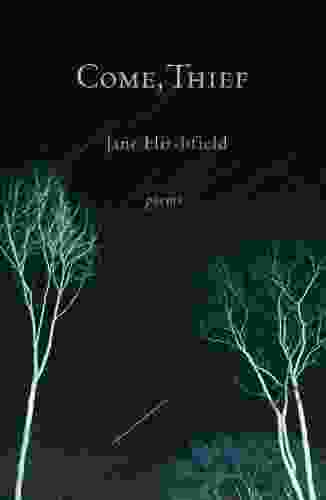The Ultimate Guide to Duchenne Muscular Dystrophy: Causes, Symptoms, Diagnosis, and Treatment

Duchenne muscular dystrophy (DMD) is a rare, progressive genetic disorder that affects primarily males. It is caused by mutations in the dystrophin gene, which is responsible for producing a protein called dystrophin. Dystrophin is essential for maintaining the structural integrity of muscle fibers. Without dystrophin, muscle fibers become weak and damaged, leading to progressive muscle weakness and wasting.
DMD typically affects boys around the age of 3 or 4, although symptoms can sometimes appear as early as infancy or as late as adolescence. The condition is characterized by progressive muscle weakness and wasting in the legs, thighs, pelvis, and trunk. As the disease progresses, muscle weakness spreads to the arms, hands, and eventually the respiratory and cardiac muscles.
4.8 out of 5
| Language | : | English |
| File size | : | 2536 KB |
| Text-to-Speech | : | Enabled |
| Screen Reader | : | Supported |
| Enhanced typesetting | : | Enabled |
| Word Wise | : | Enabled |
| Print length | : | 234 pages |
There is currently no cure for DMD, but there are treatments available to slow the progression of the disease and improve the quality of life for those affected. These treatments include physical therapy, occupational therapy, speech therapy, and medications such as corticosteroids and anticonvulsants.
Causes of Duchenne Muscular Dystrophy
DMD is caused by mutations in the dystrophin gene, which is located on the X chromosome. The dystrophin gene provides instructions for making the protein dystrophin, which is essential for the structural integrity of muscle fibers.
Mutations in the dystrophin gene can range from small deletions or insertions to large-scale rearrangements of the gene. These mutations disrupt the normal function of the dystrophin gene, resulting in the production of either a non-functional or absent dystrophin protein.
Because the dystrophin gene is located on the X chromosome, DMD is an X-linked recessive disorder. This means that males, who only have one X chromosome, are more likely to be affected by DMD than females, who have two X chromosomes. Females who carry a mutated dystrophin gene are called carriers. Carriers do not typically develop symptoms of DMD, but they can pass the mutated gene on to their children.
Symptoms of Duchenne Muscular Dystrophy
The symptoms of DMD typically begin to appear around the age of 3 or 4, although they can sometimes appear as early as infancy or as late as adolescence. The most common early symptom is difficulty walking or running, which may be noticed by parents or caregivers.
Other early symptoms of DMD include:
- Frequent falls
- Difficulty getting up from a sitting or lying position
- Waddling gait
- Enlarged calf muscles (pseudohypertrophy)
- Muscle weakness in the arms and hands
- Learning difficulties
- Behavioral problems
As DMD progresses, muscle weakness spreads to the arms, hands, and eventually the respiratory and cardiac muscles. Individuals with DMD may experience difficulty breathing, swallowing, and speaking. They may also develop scoliosis and other orthopedic problems.
The life expectancy of individuals with DMD varies depending on the severity of the condition. With early diagnosis and treatment, most individuals with DMD can live into their 20s or 30s. However, some individuals with severe forms of the condition may not live past their teenage years.
Diagnosis of Duchenne Muscular Dystrophy
DMD is typically diagnosed based on a physical examination, family history, and genetic testing.
A physical examination can reveal muscle weakness, wasting, and enlarged calf muscles. A family history of DMD can also increase the likelihood of a diagnosis.
Genetic testing can confirm the diagnosis of DMD by identifying mutations in the dystrophin
4.8 out of 5
| Language | : | English |
| File size | : | 2536 KB |
| Text-to-Speech | : | Enabled |
| Screen Reader | : | Supported |
| Enhanced typesetting | : | Enabled |
| Word Wise | : | Enabled |
| Print length | : | 234 pages |
Do you want to contribute by writing guest posts on this blog?
Please contact us and send us a resume of previous articles that you have written.
 Top Book
Top Book Novel
Novel Fiction
Fiction Nonfiction
Nonfiction Literature
Literature Paperback
Paperback Hardcover
Hardcover E-book
E-book Audiobook
Audiobook Bestseller
Bestseller Classic
Classic Mystery
Mystery Thriller
Thriller Romance
Romance Fantasy
Fantasy Science Fiction
Science Fiction Biography
Biography Memoir
Memoir Autobiography
Autobiography Poetry
Poetry Drama
Drama Historical Fiction
Historical Fiction Self-help
Self-help Young Adult
Young Adult Childrens Books
Childrens Books Graphic Novel
Graphic Novel Anthology
Anthology Series
Series Encyclopedia
Encyclopedia Reference
Reference Guidebook
Guidebook Textbook
Textbook Workbook
Workbook Journal
Journal Diary
Diary Manuscript
Manuscript Folio
Folio Pulp Fiction
Pulp Fiction Short Stories
Short Stories Fairy Tales
Fairy Tales Fables
Fables Mythology
Mythology Philosophy
Philosophy Religion
Religion Spirituality
Spirituality Essays
Essays Critique
Critique Commentary
Commentary Glossary
Glossary Bibliography
Bibliography Index
Index Table of Contents
Table of Contents Preface
Preface Introduction
Introduction Foreword
Foreword Afterword
Afterword Appendices
Appendices Annotations
Annotations Footnotes
Footnotes Epilogue
Epilogue Prologue
Prologue Corban Addison
Corban Addison Thomas H P Gould
Thomas H P Gould Dara R Fisher
Dara R Fisher John Muir
John Muir C J Cherryh
C J Cherryh Anusree Roy
Anusree Roy Jayne Louise
Jayne Louise Kate Bold
Kate Bold Brandon Zenner
Brandon Zenner Todd Hosea
Todd Hosea Claire Booth
Claire Booth Deborah Garland
Deborah Garland Georges Polti
Georges Polti Brooks Haxton
Brooks Haxton Kindle Edition
Kindle Edition Karen Bonvillain Bull
Karen Bonvillain Bull Shaun Hupp
Shaun Hupp Rowan Williams
Rowan Williams Melinda R Cordell
Melinda R Cordell Polly Alice Mccann
Polly Alice Mccann
Light bulbAdvertise smarter! Our strategic ad space ensures maximum exposure. Reserve your spot today!

 Cade SimmonsExploring the Depths of Jane Hirshfield's "Come, Thief": A Poetic Journey of...
Cade SimmonsExploring the Depths of Jane Hirshfield's "Come, Thief": A Poetic Journey of... Thomas HardyFollow ·9.5k
Thomas HardyFollow ·9.5k Ross NelsonFollow ·14.2k
Ross NelsonFollow ·14.2k Tyler NelsonFollow ·12.4k
Tyler NelsonFollow ·12.4k Ralph Waldo EmersonFollow ·7.7k
Ralph Waldo EmersonFollow ·7.7k Liam WardFollow ·6.1k
Liam WardFollow ·6.1k Fred FosterFollow ·16.6k
Fred FosterFollow ·16.6k Forrest BlairFollow ·8.8k
Forrest BlairFollow ·8.8k Arthur MasonFollow ·7k
Arthur MasonFollow ·7k

 David Mitchell
David MitchellMy Surly Heart: Poetic Expressions of Unrequited Love...
In the annals of...

 Jake Carter
Jake CarterBleach Vol. 50: The Six Fullbringers - A Comprehensive...
Bleach Vol. 50, titled "The Six...

 Edward Reed
Edward ReedThe Art of Simple Food II: A Masterclass in Culinary...
In an era of culinary excess, where meals...

 Jarrett Blair
Jarrett BlairThe Easy Ingredient Ketogenic Diet Cookbook: Your Gateway...
The ketogenic diet,...

 Larry Reed
Larry ReedThe Very Edge Poems Polly Alice Mccann: A Poetic...
An to 'The Very...

 Sidney Cox
Sidney CoxThe Keys of Death and Hades: Unlocking the Epic of...
In the realm of mythology...
4.8 out of 5
| Language | : | English |
| File size | : | 2536 KB |
| Text-to-Speech | : | Enabled |
| Screen Reader | : | Supported |
| Enhanced typesetting | : | Enabled |
| Word Wise | : | Enabled |
| Print length | : | 234 pages |










